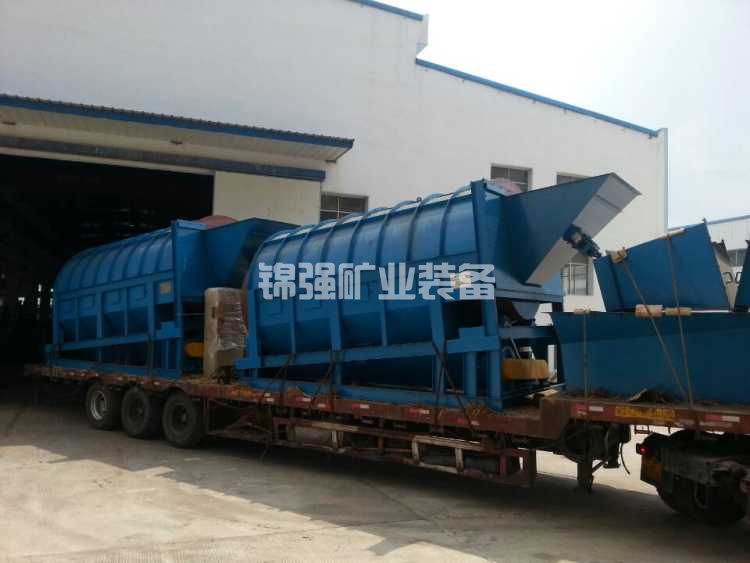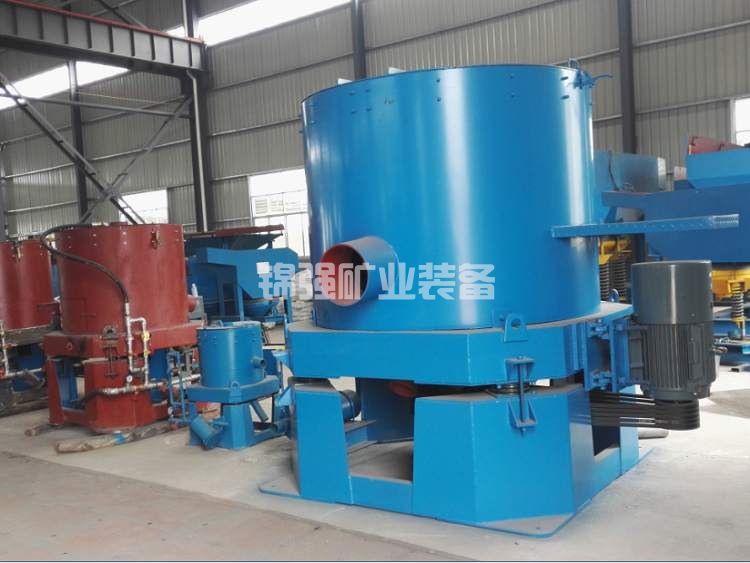 Service Phone:
+8619870423316
Service Phone:
+8619870423316
 Service Phone:+8619870423316
Service Phone:+8619870423316
current location: home > News and information
update date :2023-07-25 05:16:02Number of views: author:锦强矿山机械
Tin is an important non-ferrous metal widely used in fields such as electronics, aviation, and military industry. Tin ore, as the main output ore of tin, its beneficiation methods and processes are of great significance for improving the grade of tin and reducing production costs. This article will introduce the beneficiation methods and processes of tin ore.
1. beneficiation method of tin ore
The beneficiation methods of  tin ore mainly include multiple methods such as gravity separation, flotation, magnetic separation, etc. Among them, gravity separation is one of the commonly used beneficiation methods for tin ore, suitable for separating heavy and light minerals in tin ore. Flotation is a method of separating sulfides and oxides from tin ore. Magnetic separation, on the other hand, utilizes the different reactions between magnetic and non magnetic minerals in a magnetic field to separate the magnetic and non magnetic minerals in tin ore.
tin ore mainly include multiple methods such as gravity separation, flotation, magnetic separation, etc. Among them, gravity separation is one of the commonly used beneficiation methods for tin ore, suitable for separating heavy and light minerals in tin ore. Flotation is a method of separating sulfides and oxides from tin ore. Magnetic separation, on the other hand, utilizes the different reactions between magnetic and non magnetic minerals in a magnetic field to separate the magnetic and non magnetic minerals in tin ore.
 1. Reselection method
1. Reselection method
The gravity separation method is a method of separating minerals according to their density by utilizing their different reactions in the gravity field. In the gravity separation of tin ore, the commonly used equipment includes a shaker, spiral separator, centrifuge, etc. The advantages of gravity separation method are simple equipment and wide application range, but its disadvantages are low separation efficiency, easy generation of intermediate products, and poor separation effect for fine-grained ores.
2. Flotation method
Flotation method is a method of separating minerals from water through the action of bubbles, utilizing the differences in hydrophobicity between minerals and water. In the flotation of tin ore, the commonly used reagents include xanthate, black medicine, sodium petroleum sulfonate, etc. The advantage of flotation method is its high separation efficiency, which is suitable for fine-grained ores. However, its disadvantage is the high cost of reagents and significant environmental pollution.
3. Magnetic separation method
Magnetic separation method is a method of separating minerals according to their magnetic properties by utilizing their different reactions in a magnetic field. In the magnetic separation of tin mines, the commonly used equipment includes weak magnetic separators, strong magnetic separators, etc. The advantage of magnetic separation method is its high separation efficiency, which is suitable for ores mixed with magnetic and non magnetic minerals. However, its disadvantage is high equipment cost and poor separation effect for non magnetic minerals.
2、 The beneficiation process of tin ore
The beneficiation process of tin ore refers to the process of obtaining tin products after processing the ore through beneficiation methods. The beneficiation process of tin ore mainly includes multiple stages, such as rough selection, intermediate selection, selection, and tailings treatment.
1. Rough selection
Rough selection is the process of separating ores in a certain proportion, with the aim of separating waste rocks from useful minerals in the ore. In the rough selection of tin mines, the commonly used equipment includes vibrating screens, cyclones, etc. The advantages of rough selection are simple equipment and high sorting efficiency, but its disadvantages are low sorting accuracy and poor sorting effect for fine-grained ores.
2. Successful selection
Intermediate separation is the process of separating the roughly selected ore in a certain proportion, with the aim of further separating the useful minerals in the ore. In the selection of tin mines, the commonly used equipment includes cyclones, spiral separators, etc. The advantages of intermediate selection are high sorting efficiency and good sorting accuracy, but its disadvantages are high equipment cost and poor sorting effect for fine-grained ores.
3. Selection
Selection is the process of separating the selected ore in a certain proportion, with the aim of further purifying the useful minerals in the ore. In the selection of tin ore, the commonly used equipment includes flotation machines, magnetic separators, etc. The advantages of selection are high sorting efficiency and good sorting accuracy, but its disadvantages are high equipment cost and poor sorting effect for fine-grained ores.
4. Tailings treatment
Tailings treatment is the process of treating the waste residue generated during the mineral processing process, with the aim of reducing the pollution of the waste residue to the environment. In the tailings treatment of tin mines, the commonly used methods include dry stacking, wet stacking, etc. The advantage of tailings treatment is that it can reduce environmental pollution caused by waste residue, but its disadvantages are high treatment cost and low treatment efficiency.
3、 Summary
The beneficiation methods and processes of tin ore are of great significance for improving the grade of tin and reducing production costs. In terms of mineral processing methods, various methods such as gravity separation, flotation, and magnetic separation have their advantages and disadvantages, and suitable methods should be selected based on the specific situation. In terms of mineral processing technology, multiple links such as rough selection, intermediate selection, selection, and tailings treatment are indispensable and should be reasonably combined according to specific circumstances.
The beneficiation method and process of tin ore what type of mining was used to find gol
what type of mining was used to find gol tin mining equipment
tin mining equipment Design of Spiral Chute Beneficiation
Design of Spiral Chute Beneficiation Jiangxi fiberglass spiral chute quotatio
Jiangxi fiberglass spiral chute quotatio Rough selection of sandy kaolin spiral c
Rough selection of sandy kaolin spiral c Formula for processing capacity of spira
Formula for processing capacity of spira Coal slime gold mine spiral chute
Coal slime gold mine spiral chute 38 degree complete spiral chute
38 degree complete spiral chute Installation process of spiral chute
Installation process of spiral chute Spiral chute energy-saving installation
Spiral chute energy-saving installation Particle size of iron ore spiral chute
Particle size of iron ore spiral chute Manufacturing method of anti crushing sp
Manufacturing method of anti crushing sp